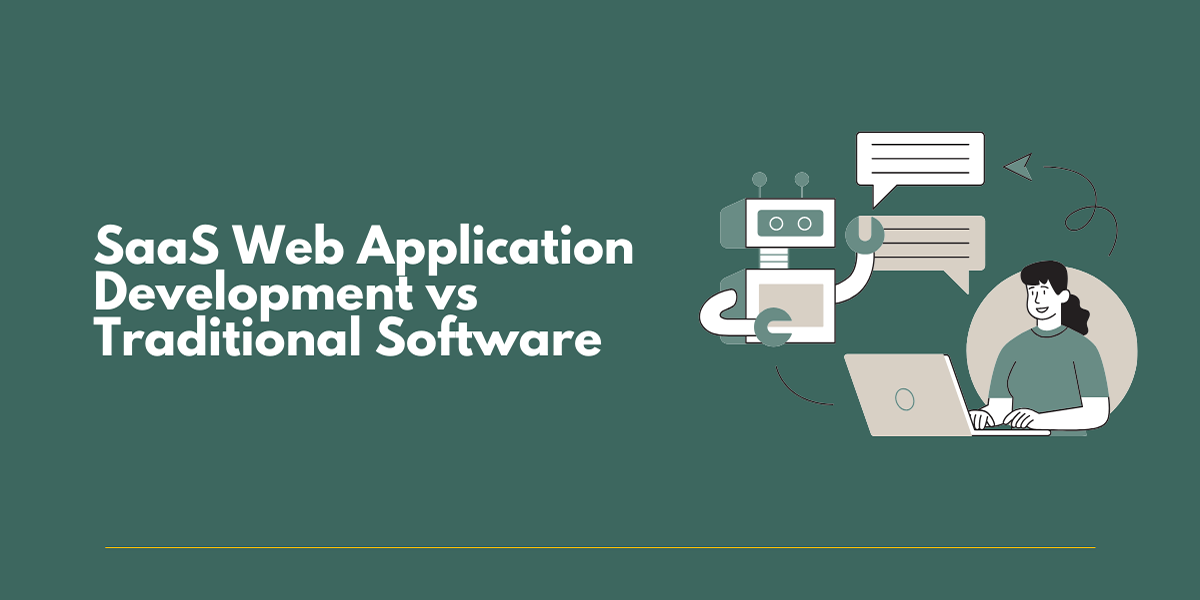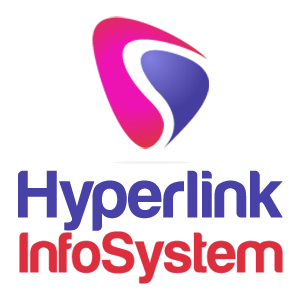
Have you ever caught yourself wondering, Should I create a SaaS app or use good old-fashioned software?
You're not alone, it's one of the biggest decisions businesses are making today.
Actually, the worldwide SaaS market is projected to surge to $242.9 billion by 2025, indicating that more businesses than ever are adopting cloud-based models. But here's the catch just because everybody's going SaaS doesn't necessarily mean that it's the right decision for you as well.
That's why today we're delving into the differences between SaaS web application development and traditional software: what they really offer, where each excels, and how you may determine which is the greatest fit for your business needs.
Whether you're planning your first app with a SaaS app development company or looking to modernize old systems, this guide can help.
Let's break it down step by step and figure out what fits your needs best.
Consider using an app that does not require you to install anything, manage servers, or worry about upgrades. You simply log in and get started. That is exactly what SaaS (Software as a Service) is about.
Instead of being installed on individual systems, SaaS solutions are cloud-based and accessible via the internet. You can access them via the internet, and you often pay a monthly or yearly subscription fee.
Some well-known examples of SaaS applications are Zoom, Google Workspace, Dropbox, and Salesforce.
Important characteristics of SaaS apps:
- Accessible at any time and from any location
- Consistent automatic updates
- Reduced initial expenses
- Simple scalability as your company expands
Traditional software returns you to the old way of doing things: you purchase a license, install it on your machine or server, and control everything internally.
Examples include Microsoft Office (desktop), Adobe Photoshop (classic), and outdated ERP systems.
It offers the following prime characteristics:
- Full control over your environment and data.
- Purchased once up front, not monthly payments.
- High customization potential.
- Oftentimes it goes offline, it doesn't need to use the internet.
Even today, companies like healthcare, financial, and governmental often use traditional software because they have strict security rules for the data.
When you're developing with SaaS, you spend a fortune less on servers, licenses, and IT costs. It's pay-as-you-go, which is really startup and SME-friendly.
Starting a SaaS application? It's quick. With the correct SaaS app development firm, you might reside in weeks rather than months.
Need to add more features or users? SaaS allows you to scale seamlessly without insane infrastructure costs.
Security patches, performance enhancements, new features release automatically. No downtime. No human intervention.
With SaaS, your team can work remotely. And with remote work here to stay, that's a huge benefit.
When each and every byte of your data must remain in-house, traditional systems provide un-paralleled control.
Buy once, use forever for some companies, it's more economical in the long run.
If you have extremely distinctive business processes, standard software can be customized ad infinitum (though usually at a cost).
No internet = no access. Always have backup plans in place!
Most SaaS platforms have limited adjustments over homegrown, old-school apps.
Paying a monthly fee might feel affordable, but over the course of years, expenses can add up.
Despite having strong security measures in place, transferring sensitive data to a third party may not be the best option for sectors such as banking or healthcare.
Servers, licenses, IT personnel. it adds up fast.
Bug fixes? Security patches? You're on your own.
Need to work from home? Classic configurations tend to involve complicated (and expensive) setups such as VPNs.
Find out how a leading software development company facilitates custom enterprise software development.
SaaS revolutionized how businesses today function.
Previously, starting a new platform involved significant initial expenses, server installation, and IT personnel. With SaaS, businesses can go live in weeks, not months. You just subscribe, log in, and begin working.
There is no need to purchase equipment or concern yourself with storage. All that is taken care of by the provider.
Companies can react to changes in the market more quickly. New features can be deployed in an instant.
SaaS platforms scale. Five users or five thousand, you can scale your plan up or down as necessary.
They also facilitate remote work. Teams spread out over locations can use the same tools, documents, and dashboards without being in the same room.
That's a game changer in a hybrid work world.
With SaaS, companies get regular updates. You always have the latest version. No manual installs or costly upgrades.
Budgeting is simpler. You shift from capital expenses to operational ones. Rather than large, upfront payments, you pay monthly or annually.
It's flexible. It's predictable.
SaaS also enhances collaboration. Software such as Google Workspace, Slack, and Asana demonstrate how effortless teamwork is in the cloud.
Analytics integrated within provide another advantage. Dashboards in real-time provide you with instant insights into performance, sales, user activity, and more.
You don't have to be technical to make informed decisions.
SaaS platforms are integratable. You can integrate your CRM, payment gateway, support desk, and email marketing tools all within one ecosystem.
From enterprises to startups, SaaS is enabling teams to scale better, save money, and accelerate.
Where sensitive data is concerned, security does not compromise.
Let us begin with SaaS. Leading SaaS vendors run their operations on cloud giants such as AWS, Microsoft Azure, or Google Cloud. Such systems have robust data security.
Features include:
- End-to-end encryption
- Two-factor authentication
- Role-based access controls
- Automated backups
- DDoS protection
- Compliance for regional hosting
Providers are often certified against standards such as SOC 2, ISO 27001, HIPAA, and GDPR.
They invest millions in securing your data. That’s a big advantage for smaller companies that lack internal cybersecurity resources.
But remember, SaaS uses a shared responsibility model. The vendor handles infrastructure security. You’re responsible for how users access and manage data.
If your team uses weak passwords or shares sensitive info, the risk increases.
Now let's compare that with traditional software.
Installed locally, traditional software provides you with total control over your data. You decide where it's kept, how it's accessed, and who's in charge of it.
That's why sectors such as healthcare, defense, and banking continue to favor on-premises systems.
They require total ownership. Particularly when operating under stringent compliance regimes.
But having your own infrastructure takes work. Your IT staff needs to patch systems, install security updates, and keep an eye on things 24/7.
If you skip a patch, your system is at risk.
Also, scaling is difficult. Want to add users? You might need additional servers and software licenses. That costs time and money.
In short: SaaS provides convenience with vendor-managed security. Traditional provides you with greater control, but greater responsibility.
Your decision is based on the nature of data you work with and how much risk your team can absorb.
Not all companies wish to become completely cloud or remain completely traditional. That's where a hybrid model performs optimally.
It blends SaaS and on-premises software.
This allows you to update part of your business while having key systems in-house.
Suppose you're in a hospital. You might use SaaS for scheduling appointments. But you might keep patient records on local servers for HIPAA compliance.
Or a real estate brokerage. You use cloud CRM for lead tracking but host internal reporting tools on an in-house server.
This model offers flexibility. You decide what goes to the cloud and what remains offline.
It's safer too. If one breaks, the other continues to work. That's critical for business continuity.
Transitions are best done with hybrid models. You don't replace everything at the same time. Gradually move teams, departments, or features.
Begin small. Grow smart.
But, yes, handling hybrid systems requires planning. You will require integration between cloud and local tools. And your security team will need to secure both.
Yet, the advantages are huge.
Hybrid software solutions provide you with cloud flexibility and native control simultaneously.
It's the best of both worlds.
For companies who desire to innovate but don't want to relinquish control, hybrid is the ideal middle ground.
The best choice depends on your situation:
- You want fast, affordable solutions
- You value scalability and flexibility
- Your team is remote
- You want low maintenance
- You need full control over data
- You want deep system customization
- You have strict security regulations
- You have robust IT infrastructure
With respect to the decision between SaaS web app development and standard software, there's no silver-bullet answer.
It all depends on what your company really needs today and in the future.
Let's break it down simply:
If market speed is of importance to you and your budget-conscious, SaaS is your friend. There's no large server investment or installations. You can get started instantly without spending much upfront.
Is your business expanding quickly? Planning to expand into multiple areas or countries? SaaS apps may grow with you, allowing you to add users, storage, and new features without requiring substantial upgrades or infrastructure modifications.
In today's remote-first environment, SaaS is a lifesaver. It allows your staff to collaborate from anywhere, on any device, if they have an internet connection. It promotes teamwork and productivity without being connected to a workplace network.
Do you hate dealing with updates, patches, and server crashes? SaaS solutions automatically manage all maintenance and security updates. This allows your internal staff to focus more on business objectives and less on IT difficulties.
Certain businesses, such as healthcare, finance, and government, demand complete control over sensitive data due to regulatory and security requirements. Traditional software housed on your own servers provides complete control and privacy.
If your business operations are extremely unique and require software that adapts to your specific workflows, traditional software frequently provides significantly more customization choices than off-the-shelf SaaS offerings.
Compliance is not always optional; in some cases, it is required. When legal or industry laws demand complete control over where and how your data is held, traditional on-premises solutions can better meet these requirements.
Have you already established a robust internal IT staff and infrastructure? Traditional software may be a wise investment, allowing you to maximize the value of your existing resources while tailoring the system precisely to your requirements.
Still not sure which way to go?
A pioneering SaaS app development company can help evaluate your goals, navigate compliance requirements, and craft a solution tailored to your business growth.
SaaS web application development provides unparalleled convenience, scalability, and affordability for most contemporary businesses. But that doesn't imply that conventional software is on its deathbed, it's just becoming more specialized for certain, highly managed environments.
Knowing your business model, industry compliance requirements, and expansion plans will assist you in making the most intelligent choice.
Considering developing a SaaS product?
Collaborate with an experienced SaaS application development company to turn your idea into reality sooner, smarter, and designed for tomorrow.
Because when it's your business future, you should have nothing but the best.
